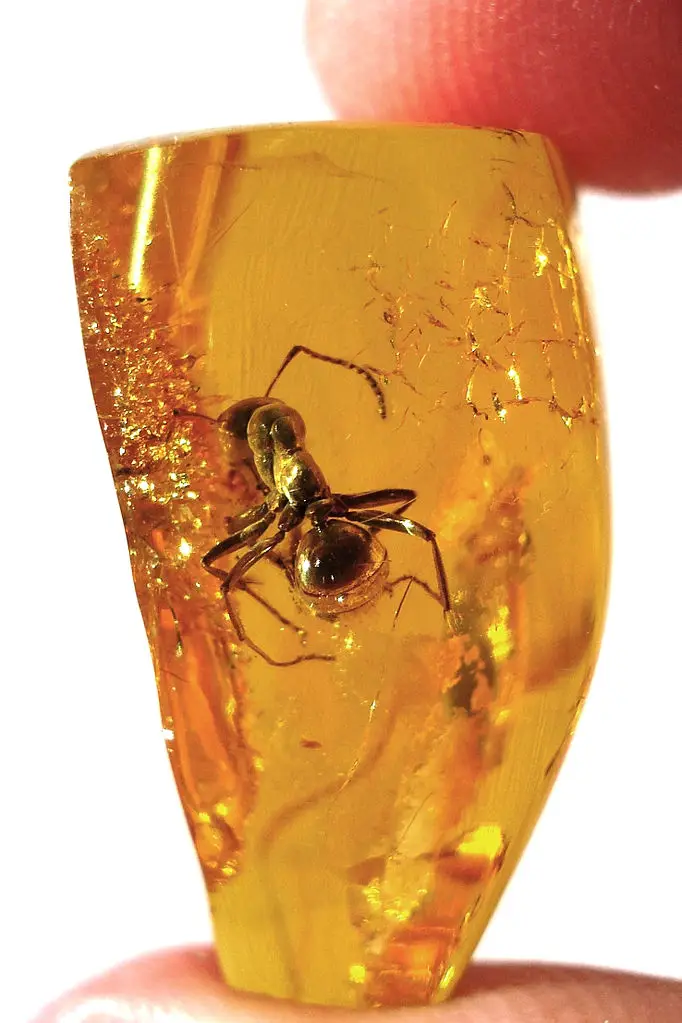The research conducted by Ryan McKellar’s sounds like it could of come straight out of Jurassic Park: he studies pieces of amber found buried with dinosaur skeletons. However, instead of re-creating dinosaurs, McKellar uses the tiny pieces of fossilised tree resin to study a world where the extinct animals thrived.
Novel techniques for investigating very tiny pieces of fragile amber buried in dinosaur bonebeds has the potential to fill the gaps in knowledge about the ecology of dinosaurs, said McKellar, a research scientists at the Royal Saskatchewan Museum in Saskatchewan, Canada.
“Basically it puts a backdrop to these dinosaur digs, it tells us a bit about the habitat,” said McKellar. The amber can show what types of plants were abundant, and what the atmosphere was like when the amber was formed, he explained. Scientists are then able to collate details regarding what kind of habitat the dinosaur lived in and how the bonebed formed.
The preliminary findings about dinosaur ecology, habitat and other results from four different fossil deposits from the Late Cretaceous in Alberta and Sakatchewan, Canada, was presented on Monday, October 20th at the Geological Society of America Annual Meeting in Vancouver, Canada.
“Just a few of these little pieces among the bones can show a lot of information,” McKellar said.
The type of amber that the scientists work with is not the jewellery grade variety that can be constructed into a necklace or earrings. “This type of amber hasn’t been pursued in the past. It is like working with a shattered candy cane,” he said. It is called friable amber, which has a crumbly texture and it is very fragile.
McKellar and his colleagues work with very small pieces of amber, measuring just a few millimeters wide. But even samples on such a small scale can contain huge clues to the past.
Before hardening into amber, the sticky tree resin would often collect animal and plant material, such as leaves and feathers. Scientists have called these contents ‘inclusions’, which they study along with the surrounding amber as it contains clues to environmental conditions, like surrounding water sources, temperature and even oxygen levels of the ancient environment.
Insects have also been known to be included in the amber, which can be extremely helpful to scientists. An example being, the discovery of an aphid, stuck directly to a duck-billed dinosaur with some amber. With a find like this, scientists are able to track insect evolution, find their modern relatives, and see how the may have interacted with dinosaurs, said McKellar.
“When you get insects, it is like the frosting on the cake- you can really round out the view of the ecosystem.”

Improvements in processing friable amber have made this research possible. Instead of the old technique of screening amber in a glycerin bath, the scientists reduce crumbling by vacuum-injecting the amber with epoxy, said McKellar.
Friable amber is widespread across the North American Continent in association with coals, and in the uncovered bonebeds, which means the area of research has grown with the new techniques. It enables scientists to sample at a finer scale, and still fill some gaps in the past, especially regarding insect evolution, said McKellar.
Some of the early results of this method will be presented from amber pieces discovered with the skeleton of ‘Scotty’ the Tyrannosaurus rex, in Saskatchewan, Canada. McKellar will also be including case studies from three other bone beds: the Danek Bonebed near Edmonton, Alberta; Dinosaur Provincial Park, Alberta; and the Pipestone Creek Pachyrhinosaurus Bonebed near Grande Prairie, Alberta.
Contributing Source: The Geological Society of America
Header Image Source: Wikimedia




